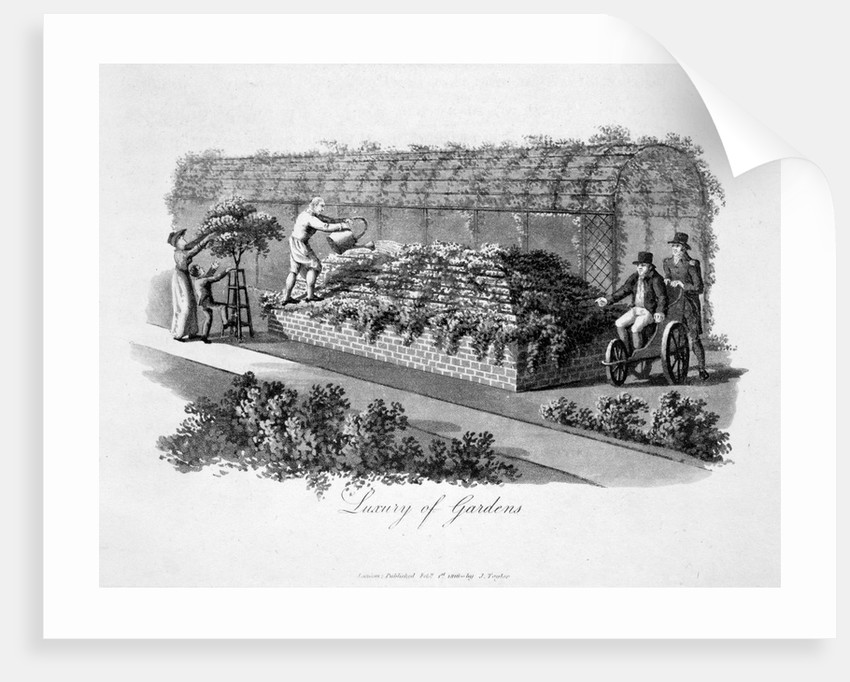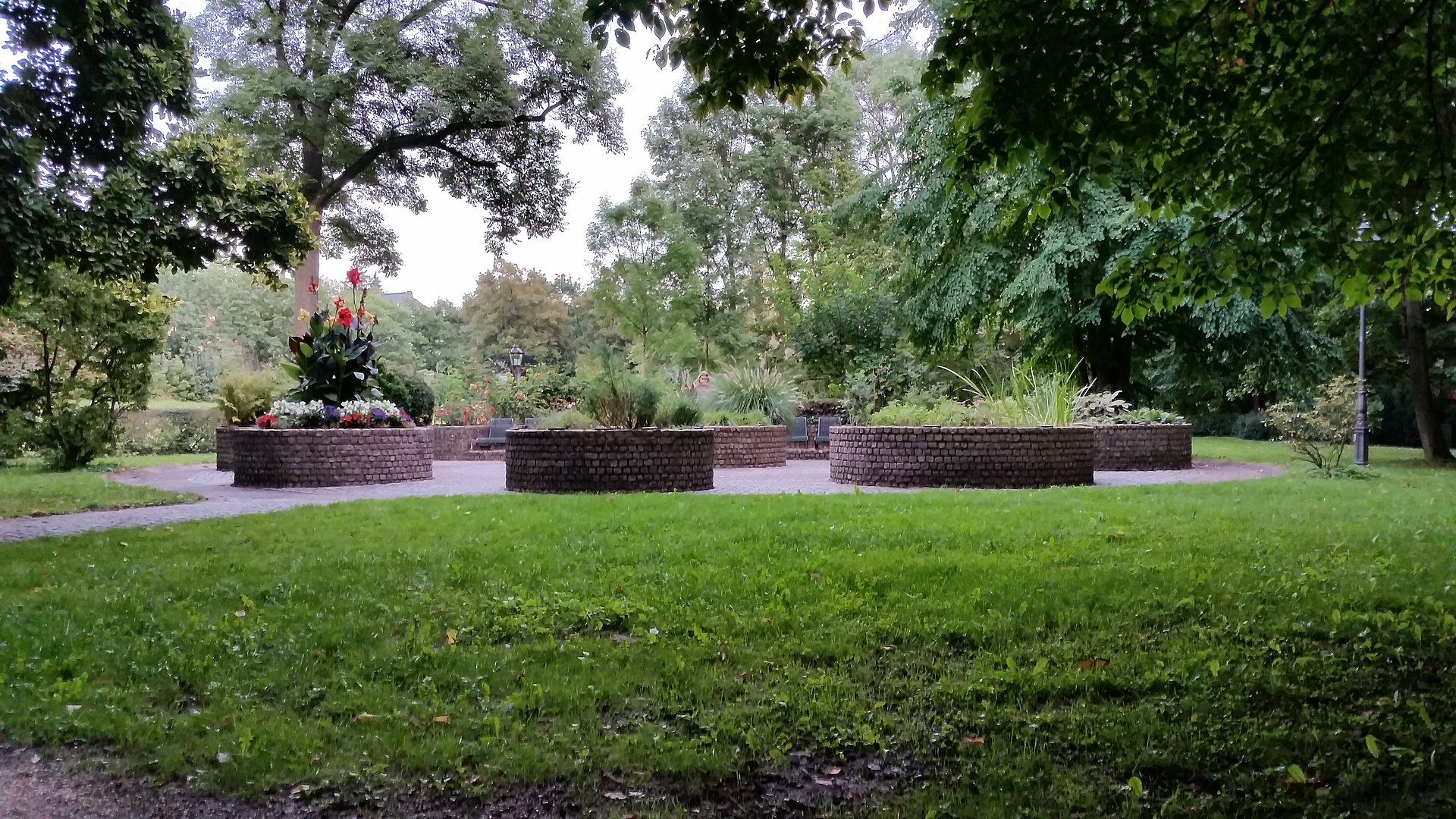With a gift from the proceeds of a Human Rights decision, the Friends of the Public Gardens are developing an accessible sensory garden. A committee 3-4 of key individuals is being formed in anticipation of a 2019 launch. If you would like to contribute ideas, please contact Judith Cabrita at the Friends judithcabrita1@gmail.com. Be prepared for an interesting project with history, horticulture, community, design and architecture all rolled into one!
Accessible:
Humphry Repton (21 April 1752 – 24 March 1818) was the last great English landscape designer of the eighteenth century, often regarded as the successor to Capability Brown; he also sowed the seeds of the more intricate and eclectic styles of the 19th century. In 1811 Repton suffered a serious carriage accident which often left him needing to use a wheelchair for mobility.
Sound:
Down a small pathway off Brattle Street in Cambridge is the Helen Keller fountain with a small lion with water coming from its mouth. Keller explains the revelation that Anne Sullivan brought to her in The Story of My Life (1924).
Touch & Smell
Taste
Plants:
Sight
Flowers have bright, bold colours to attract birds and insects to them for pollination and seed dispersal, but they are wonderful for humans to look at too! Choose bold leaved and architectural plants, perhaps mulched with different coloured items such as slate, pebbles or shells. Steer clear of recycled coloured glass mulches.Sunflowers, Helianthus annuus; a bright, bold looking flower that can grow 30 cm in height in a week in ideal conditions.*
Love-in-a-mist, Nigella damascena; sun-loving, bright blue flowers.*
Chameleon plant, Houttuynia cordata ’Chameleon’, three-toned foliage which smells of lemon.
Swiss chard ‘Bright Lights’, Beta vulgaris; brightly coloured stems and foliage.*
Heuchera cultivars are available in many vibrant colours and shades from lime green to red and dark purple.
Taste
There are so many delicious plants that it’s difficult to choose just a few. Although many of these are used in our cooking, please remember that some children could have allergies to any one of the following:Spearmint, Mentha spicata; a vigorous growing herb, which tastes great with peas or new potatoes.
Rosemary, Rosmarinus officinalis; highly fragrant leaves used to flavour meat and fish. Its scent is wonderful.
Chives, Allium schoenoprasum; in addition to delicious foliage that can be used in salads. This plant also produces pretty pink, mauve or purple flowers.
Nasturtium, Tropaeolum majus; a colourful salad can be made from the beautiful peppery orange, red or yellow flowers and the foliage.*
Wild strawberry, Fragaria vesca; this plant loves partial sun and fairly damp conditions and produces small, sweet, delicious fruit.*
Pot marigold, Calendula officinalis; gorgeous, sunny flowers, with aromatic, dark green leaves. The petals brighten up any salad.*
Sweet basil, Ocimum basilicum; the Italians wouldn’t consider cooking without this delicious, fresh-tasting herb.*
Vegetables. These are plants too and taste no better than when you grow them yourself. Try carrots, radishes, lettuces, broad beans or peas.*
Smell
The aromas given off by flowers are wonderful to enjoy, but the smells have a purpose too. Plant scents attract insects to the flowers for pollination and some smelly leaves deter insects from eating them.Curry plant, Helichrysum italicum; curry smelling leaves which give off a spicy aroma on a warm, sunny day.
Lavender, Lavandula angustifolia; relaxing, fresh aroma with tiny purple flowers.
Chocolate cosmos, Cosmos atrosanguineus; beautiful, maroon flowers give off a chocolate/ vanilla scent - a big hit with the kids!
Stocks, these scented summer flowers are very traditional and come in a variety of pink, white & red shades.*
Lemon scented geranium, Pelargonium crispum; crinkly leaves that smell of lemon when rubbed.
Oregano/wild marjoram, Origanum vulgare; the aromatic leaves are delicious dried or fresh in pasta dishes. This plant also produces pretty pink or white flowers in midsummer to early autumn.*
Sound
Sit in your garden and listen to all the sounds of nature around you; the bees buzzing, the birds singing, the sounds of the wind rustling through grasses and plants. Add a water feature or wind chimes to enhance the sounds in your garden.Greater quaking grass, Briza maxima; a grass that rustles in the wind with nodding, lantern-like heads of flowers.
Miscanthus oligostachyus ‘Nanus Variegatus’; pretty bamboo-like foliage, which creates a rustling noise.
Sweetcorn, Zea mays; another rustler and good to eat too!*
A bamboo, Phyllostachys; pretty foliage which whispers in the wind.
Fountain grass, Pennisetum alopecuroides; long, evergreen grass, with bristly spikelets.
Touch
Leaves vary between plants, from rough to smooth, furry to spiky. Every texture has a purpose; many plants that are nice to feel have adapted to a specific natural environment in some way. These can be succulents or have hairy leaves to cope with dry conditions. Here are a few plants that are nice to touch.Lamb’s ears, Stachys byzantina; as its common name suggests, its downy leaves resemble the ears of a lamb.
Silver sage, Salvia argentea; large, silvery –white leaves covered in cotton wool like down.
Jerusalem sage, Phlomis fruticosa; soft, downy leaves and stems with pretty, yellow flowers.




No comments:
Post a Comment